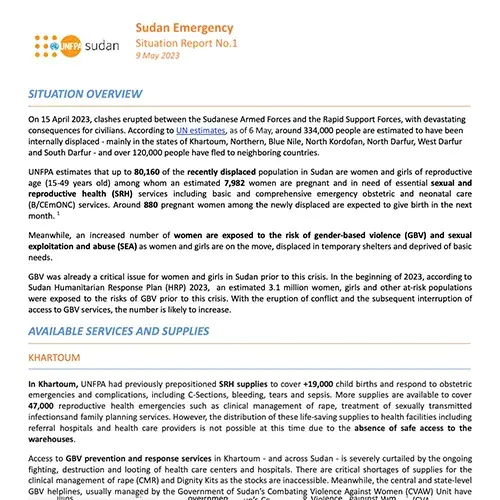On 15 April 2023, clashes erupted between the Sudanese Armed Forces and the Rapid Support Forces, with devastating consequences for civilians. According to UN estimates, as of 6 May, around 334,000 people are estimated to have been internally displaced - mainly in the states of Khartoum, Northern, Blue Nile, North Kordofan, North Darfur, West Darfur and South Darfur - and over 120,000 people have fled to neighboring countries.
UNFPA estimates that up to 80,160 of the recently displaced population in Sudan are women and girls of reproductive age (15-49 years old) among whom an estimated 7,982 women are pregnant and in need of essential sexual and reproductive health (SRH) services including basic and comprehensive emergency obstetric and neonatal care(B/CEmONC) services. Around 880 pregnant women among the newly displaced are expected to give birth in the next month.
Meanwhile, an increased number of women are exposed to the risk of gender-based violence (GBV) and sexual exploitation and abuse (SEA) as women and girls are on the move, displaced in temporary shelters and deprived of basic needs.
GBV was already a critical issue for women and girls in Sudan prior to this crisis. In the beginning of 2023, according to Sudan Humanitarian Response Plan (HRP) 2023, an estimated 3.1 million women, girls and other at-risk populations were exposed to the risks of GBV prior to this crisis. With the eruption of conflict and the subsequent interruption of access to GBV services, the number is likely to increase.


